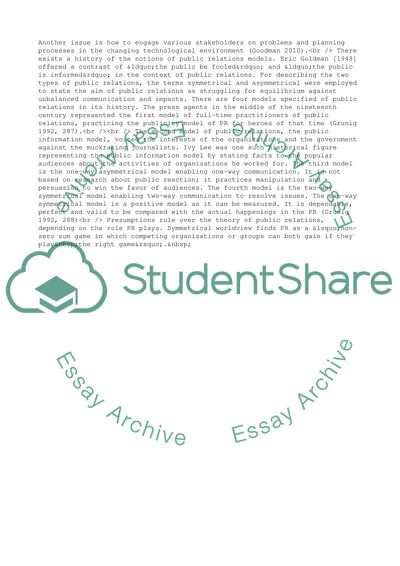Cite this document
(Rapid Rise of Social Media Tools and a Shift to a Stakeholder Society Case Study, n.d.)
Rapid Rise of Social Media Tools and a Shift to a Stakeholder Society Case Study. Retrieved from https://studentshare.org/management/1743561-due-to-the-rapid-rise-of-social-media-tools-and-a-shift-to-a-stakeholder-society-are-public-relation-practitioners-witnessing-a-new-model-of-pr
Rapid Rise of Social Media Tools and a Shift to a Stakeholder Society Case Study. Retrieved from https://studentshare.org/management/1743561-due-to-the-rapid-rise-of-social-media-tools-and-a-shift-to-a-stakeholder-society-are-public-relation-practitioners-witnessing-a-new-model-of-pr
(Rapid Rise of Social Media Tools and a Shift to a Stakeholder Society Case Study)
Rapid Rise of Social Media Tools and a Shift to a Stakeholder Society Case Study. https://studentshare.org/management/1743561-due-to-the-rapid-rise-of-social-media-tools-and-a-shift-to-a-stakeholder-society-are-public-relation-practitioners-witnessing-a-new-model-of-pr.
Rapid Rise of Social Media Tools and a Shift to a Stakeholder Society Case Study. https://studentshare.org/management/1743561-due-to-the-rapid-rise-of-social-media-tools-and-a-shift-to-a-stakeholder-society-are-public-relation-practitioners-witnessing-a-new-model-of-pr.
“Rapid Rise of Social Media Tools and a Shift to a Stakeholder Society Case Study”. https://studentshare.org/management/1743561-due-to-the-rapid-rise-of-social-media-tools-and-a-shift-to-a-stakeholder-society-are-public-relation-practitioners-witnessing-a-new-model-of-pr.


